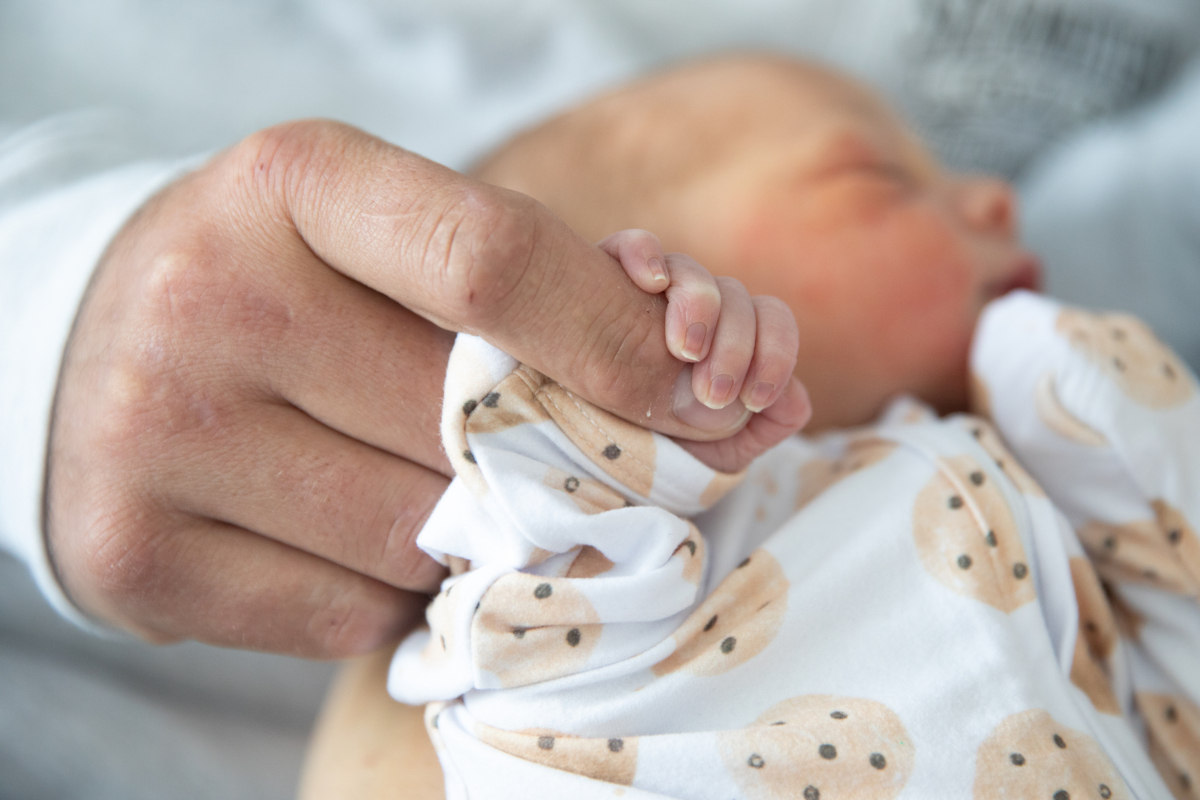Last Updated on November 24, 2025 by
In the world of health, we often hear the term “anomalies.” But what exactly are anomalies? In medicine, anomalies mean big differences from what’s normal. These can be small changes in chromosomes or big differences in body parts, like heart or limb issues.

These differences can really affect health worldwide, touching millions of people every year. It’s important to know about the different types of anomalies and how common they are. This knowledge helps improve care and prevention in hospitals all over the world.
To tackle the challenges posed by anomalies, it’s essential to first understand what they are and their far-reaching consequences. Anomalies, in a broad sense, refer to conditions or occurrences that deviate from the norm or expected standard.

Anomalies can be categorized into various types based on their nature and impact. Congenital anomalies, for instance, are conditions present at birth that can affect the physical or functional development of an individual. These anomalies can range from mild to severe and are a significant concern globally.
The classification of anomalies is key to understanding their causes, symptoms, and treatments. By defining and categorizing these conditions, healthcare professionals can better address the needs of affected individuals.
Congenital anomalies occur in about 3–6% of all births worldwide and are a leading cause of neonatal deaths. The global health impact of these anomalies is substantial, affecting not only the individuals but also their families and communities.
Understanding the significance of congenital anomalies is vital for developing effective healthcare strategies. By acknowledging the prevalence and consequences of these conditions, we can work towards improving outcomes for those affected.
We recognize that anomalies, including congenital ones, have a profound effect on global health. By exploring the definition, classification, and impact of these conditions, we can better understand the challenges they pose and the support needed for those affected.
Structural anomalies affect many areas, like the heart, brain, and muscles. These issues can greatly impact a person’s health and quality of life.

Congenital heart defects are common, affecting the heart’s structure and function. These defects can range from mild to severe, making it hard for the heart to pump blood. Early detection and treatment are key to managing these conditions.
Neural tube defects happen when the brain and spinal cord don’t form properly during pregnancy. This can cause spina bifida and anencephaly. Knowing the causes and risk factors is vital for prevention and care.
Cleft lip and palate affect the mouth and nose. Surgical interventions and multidisciplinary care are needed to fix these issues. This helps improve both function and appearance.
Musculoskeletal and limb anomalies vary in how they affect people. Conditions like clubfoot and limb deficiencies need specific treatments. This often includes surgery, physical therapy, and occupational therapy.
Every person with structural anomalies has a unique experience. Care must be tailored to their needs. By understanding the different types of anomalies, we can see the importance of a team approach to support.
Understanding functional anomalies is key. They include metabolic disorders, chromosomal abnormalities, and sensory and neurological dysfunctions. These can deeply affect people and their families.
Functional anomalies disrupt the body’s systems. They can affect not just the person but also their loved ones. We will look at the different types and their effects.
Metabolic disorders affect the body’s metabolic processes. They can cause diabetes, obesity, and other metabolic syndromes.
Early detection and management of metabolic disorders are key. Lifestyle changes and medical treatments can greatly improve outcomes.
Chromosomal abnormalities happen when there’s a change in the number or structure of chromosomes. This leads to conditions like Down syndrome, Turner syndrome, and Klinefelter syndrome.
Common Chromosomal Abnormalities:
Knowing the genetic basis of these conditions helps in providing the right care and support.
Sensory and neurological dysfunctions affect the nervous system and sensory perception. They include autism spectrum disorder, cerebral palsy, and sensory processing disorder.
Early intervention and tailored support can greatly improve life for those with these conditions.
In conclusion, functional anomalies are diverse and can deeply impact individuals and their families. Understanding these conditions is the first step to providing the right care and support.
Anomalies, or conditions that are different from the norm, affect people in various ways around the world. These differences depend on where someone lives, their economic status, and how easy it is to get healthcare.
About 3-6% of global births have major anomalies. This shows how big a challenge anomalies are for healthcare and families everywhere. Anomalies are a worldwide problem that needs a big, united effort to solve.
More than 90% of major anomalies happen in low- and middle-income countries. This is mainly because of less prenatal care, poor healthcare, and more marriages between relatives. We must understand the hard work these countries do to help people with anomalies.
How often anomalies happen varies by region. This is because of genetics, the environment, and money. For example, some genetic issues are more common in areas where people marry their relatives more often. Knowing these differences helps us create better help and support.
To tackle anomalies worldwide, we need to do many things. We must improve healthcare access, offer better prenatal tests, and support those affected and their families. Together, we can really help those dealing with anomalies.
Medical care has improved a lot, changing how we deal with anomalies. Now, we focus more on long-term disability than death. This change is big in places with good medical care, where people with anomalies live longer.
Long ago, many anomalies meant a short life. But new medical tech and care have changed this. For example, heart defects that used to be deadly are now often treatable, letting people live up.
But this progress brings new challenges. People with anomalies now face long-term disabilities. They need ongoing care and support. This shows we need better healthcare that covers their whole lives.
New medical breakthroughs have changed lives for the better. Better surgeries, tests, and care after surgery have helped. Prenatal screening, for instance, catches anomalies early, leading to better outcomes.
Also, teams of doctors now work together to care for people with anomalies. This team effort helps meet their complex needs. It makes their lives better, even with their conditions.
Despite progress, big gaps exist in care for anomalies. In poor countries, getting the right medical help is hard. This leads to more deaths and fewer people living with disabilities.
The gap is not just in getting care but also in the care’s q Rich countries have better healthcare, leading to better lives for those with anomalies. We must work to close this gap for fair care everywhere.
In short, the move from death to long-term disability shows how far we’ve come in medicine. But we must keep improving, mainly in poor areas, to make sure everyone gets the care they need.
Dealing with anomalies needs a full plan, from before birth to lifelong care. At Liv Hospital, we show our commitment to innovation and quality healthcare. We tackle these challenges with ethics and care.
Prenatal screening is key for spotting anomalies early. This lets us act fast and plan. New ultrasound and genetic tests help us find issues early.
Anomaly detection tech is now part of prenatal care. It makes our detection more accurate.
Finding issues early helps prepare for a child’s special needs. It also helps make important pregnancy choices. Our team offers clear advice and support every step of the way.
For many anomalies, surgery or medicine is needed. New surgical methods, like small incisions, have better results. Our doctors work with patients and families to find the best treatment.
Using the latest medical tech and custom plans, we give each patient the best care. We’re all about top-notch healthcare and helping international patients.
People with anomalies often need care for life. This includes regular medical visits, therapy, and support. Our team is here to support and guide them always.
We take a whole-life approach to care to better people’s lives. We want to give patients and families the tools to face these challenges.
Understanding anomalies is key to helping those affected by them. This article has covered various types of anomalies, their global presence, and how they’ve changed from being life-threatening to causing long-term disability.
Anomalies are big differences from the usual. Knowing what an anomaly is helps us spot and manage them early.
As medical care improves, we must focus more on anomalies. This way, we can help people with these conditions live better lives.
The importance of grasping anomalies is huge. We hope this article has given you a deeper look into this complex subject.
An anomaly is when something doesn’t follow the usual pattern. It’s often a group of data points that don’t fit the norm.
Anomalies come in many forms. Structural anomalies include things like heart defects and cleft lips. Functional anomalies include metabolic disorders and chromosomal issues.
Congenital anomalies have a big impact on health worldwide. They lead to high death rates in newborns and can cause lifelong disabilities. This problem is worse in poorer countries.
Finding anomalies early is key to better care. It lets doctors start treatments quickly. This can lead to better health outcomes for those affected.
New medical advancements have changed how we deal with anomalies. Instead of just focusing on survival, we now aim for quality of life. This means more people live with disabilities, not just die from them.
Structural anomalies include heart defects, neural tube defects, and cleft lips. They also include issues with muscles and limbs.
Functional anomalies, like metabolic disorders, affect people and their families a lot. They need ongoing care and support to manage their condition.
Anomalies happen in about 3-6% of births worldwide. They are more common in poorer countries. Where they happen can depend on many factors.
It’s hard to manage anomalies in poor areas because of limited healthcare. This leads to worse outcomes compared to richer countries.
Knowing more about anomalies helps a lot. It leads to early detection and better care. This can greatly reduce the impact of anomalies worldwide.
Subscribe to our e-newsletter to stay informed about the latest innovations in the world of health and exclusive offers!